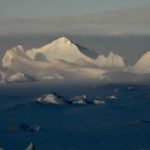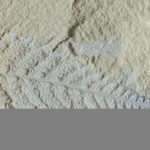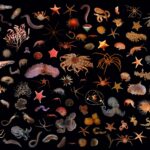BAS has one of the largest collections of Antarctic rocks and fossils in the world. The unique and irreplaceable collections contain over 200,000 specimens from Antarctica and the sub-Antarctic Islands collected over the last 75 years for a variety of geological disciplines such as petrology, mineralogy, sedimentology, palæontology, micropalæontology and palynology.
The Geological laboratories provide facilities for:
- Petrographic preparation (cutting, crushing, powdering, magnetic separation) for geochemical analysis.
- Sedimentology including grain size analysis.
- Sediment core work (splitting, sampling, sieving).
- Micropalæontology (quantitative diatom slide preparation, foraminifera analysis).
- Palæontology (fossil analysis, replication, photography).
- Microscopy (petrographic, binocular, stereoscopic).
11 January, 2016 by
Joanne Johnson
The challenges of glacier travel The ANiSEED project field area lies between two of the most rapidly changing glaciers in Antarctica, the Smith and Kohler Glaciers. These have thinned more …
5 January, 2016 by
Joanne Johnson
Greetings from Marie Byrd Land! The waiting is over….we finally arrived at our field site on 11th December, after a 4 hour flight from Sky Blu one of BAS’s fuel …
Contains over 200,000 individual rock and fossil specimens collected from Antarctica and the sub-Antarctic islands and thousands of meters of sediment core from the surrounding seabed.
The evolution and ecology of Antarctic sea floor communities is a UKRI Future Leaders Fellowship, led by Dr Rowan Whittle, looking at the past, present and future of life at …




